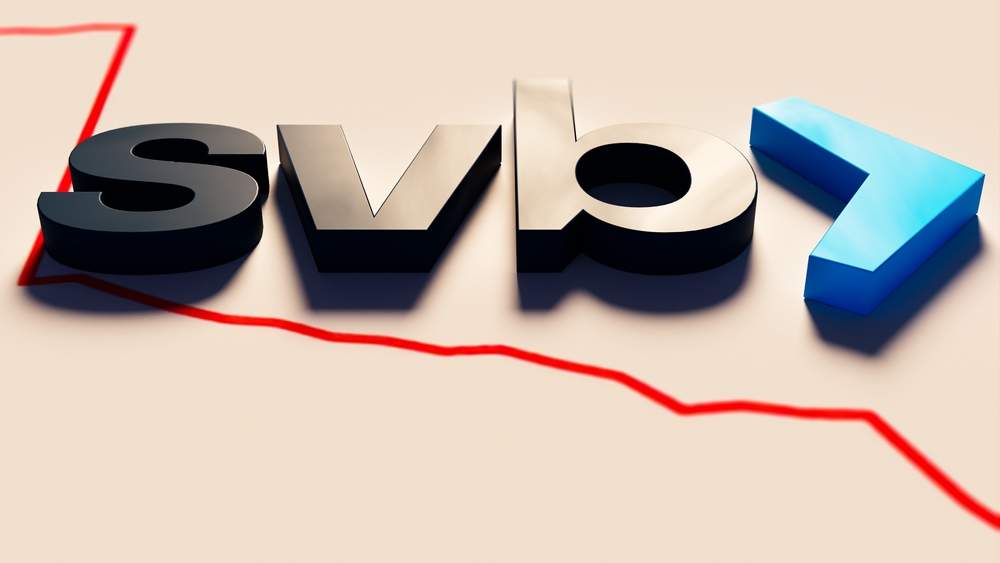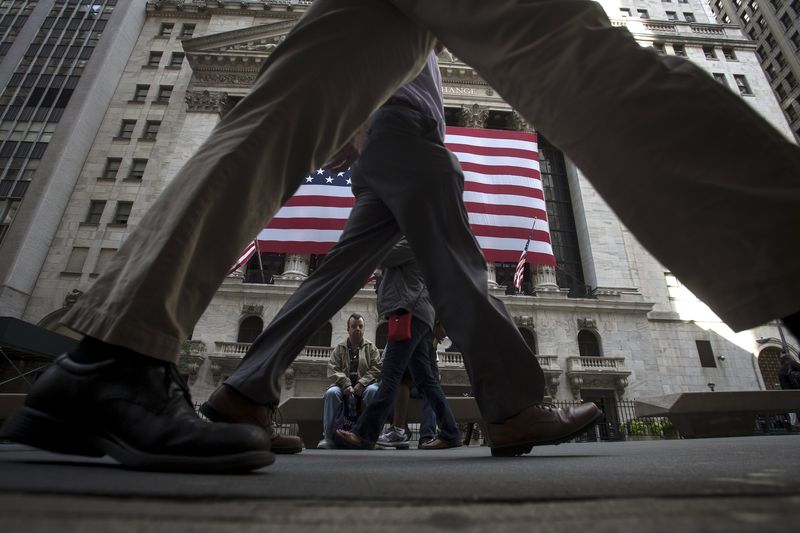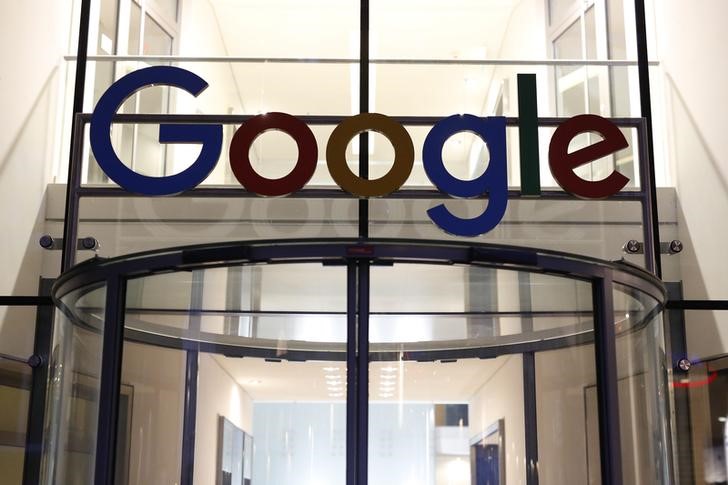[ad_1]
Everybody knows that trading is risky and buying 30-year Treasury bonds is safe.
Right?
There’s actually an argument for precisely the opposite.
Hear me out…
Exhibit A is the recent collapse of Silicon Valley Bank (SVB).
What was once the 16th largest bank in the U.S. is now the largest bank failure since Washington Mutual’s in 2008.
But it wasn’t reckless lending to “risky,” subprime borrowers that brought down SVB.
It was the bank executives’ decision to buy supposedly “safe” 30-year T-bonds — and a similar class of income assets, federal agency mortgage-backed securities (MBS) — at paltry yields just as the bond market was making what’s been widely called a “generational top.”
More so, it wasn’t a default of those 30-year Treasurys or MBS’s that led to the bank’s demise … it was simply the rise in interest rates.
And it’s all the Fed’s fault.
But before we go down that rabbit hole, we need to talk about the not-so-hidden risk in owning these long-dated fixed-income assets.
I bring this up because right now — with high inflation and Treasury yields at their highest levels since 2010 — it seems like a good time to buy T-bonds. They’re often called a “risk-free return,” which is mostly but by no means completely true.
In reality, any investor who doesn’t understand how these assets work can find themselves in a troubling position.
Investors big and small must understand these risks before they make any investment decision. Today, I’ll put a spotlight on those risks so you can be confident in whatever move you decide to make.
And I’ll go a step further … and make the case for why a long-term fixed-income asset likely pales in comparison to making simple, low-stakes trades a few times a week.
“Risk-Free” in Name Only
There are two categories of risk you bear any time you buy a bond: credit risk and duration risk.
Credit risk is the risk of the issuer of the bond defaulting. Plenty of corporations have defaulted on their bonds, but the U.S. government never has. And that’s why the 30-year Treasury bond is often seen as the safest place in the world to park capital.
But as we saw with SVB, that doesn’t mean even “risk-free” T-bonds can’t destroy a portfolio. That’s because of duration risk.
Duration risk is all about the relationship between interest rates and bond prices.
Think of it like this…
If you own a 30-year bond yielding 2%, and then a year later newly issued 30-years are yielding 3%…
And you want or need to sell your 2% 30-year bond, for whatever reason…
Why would someone buy your 2% 30-year, if they could just buy the newly issued 3% 30-year instead?
The answer is … they won’t. At least, not unless you discount the price to make up for the lost interest.
That’s why bond prices go down, when interest rates go up.
And of course, SVB executives learned this all too well…
The long-dated fixed-income assets they decided to buy throughout 2020 and 2021 — when interest rates were low and bond prices were high — lost a ton of value when interest rates climbed higher and bond prices spiraled lower.
It’s been reported that SVB’s Treasury and MBS portfolio was yielding a lowly 1.6% at the end of 2021…
So when the yield on newly issued batches of those securities rose sharply to the 5% range by the end of 2022, the bank suffered a loss of $15 billion or even more.
The bank needed to sell the bonds to meet its depositors obligations. So, it had to discount the price to do so … and sold them for a lot less than it bought them for just a year or two earlier.
So much for the idea of 30-year Treasury bonds being “safe,” right?!
To be fair, if you intend to hold a 30-year T-bond to maturity, you technically have nothing to worry about. So long as you are never in a position where you need to pull those funds for 30 years… (And who can say that with absolute confidence?)
The other risk, naturally, is that the U.S. government goes belly-up. (Though, in that scenario, you have bigger problems.)
So, what should you do instead?
We’re getting there, but first, we have to understand why we’re here, asking these questions, to begin with.
The End of the Free Money Era
I said earlier that the collapse of Silicon Valley Bank was arguably the Federal Reserve’s fault…
And that trading may be a safer way to grow your investment account than 30-year T-bonds.
I sense a raised eyebrow, so let’s pull on those strings now.
First, no shortage of words have been written about the Fed’s recklessly long-lasting zero-interest rate policy, which created the era of “free money.”
As an emergency response to the 2008 Great Financial Crisis, the Fed cut the Fed funds rate to zero. But then, for some inexplicable reason, as both the economy and market were recovering nicely, it left it there well into 2015.
The Fed attempted a meager rate-hike cycle into 2018, but then quickly reversed course when stocks stumbled in the fourth quarter of that year.
And then, of course, the Fed was highly accommodative in response to the 2020 COVID-19 pandemic.
All told, this free-money era that lasted from 2009 through 2021 was a boon to borrowers, consumers and stock market investors.
But it was financial repression for lenders and savers.
A bondholder is both a saver and a lender… You’re loaning your money at the safe assumption you’ll get it back at maturity.
So when the Fed cuts its federal funds rate all the way to zero and then leaves it there, it’s nearly impossible to earn a satisfactory yield in the safest type of Treasury: short-dated Treasurys, such as the two-year T-note, or the two-month T-bill.
The Fed’s folly in this regard had a knock-off effect that’s generally called “the reach for yield.”
Unable to earn a satisfactory yield in short-dated Treasurys, investors were lured into buying things that were further out on the risk curve — long-dated Treasurys, which typically pay a higher yield than short-dated ones.
Even those earned a middling 3% on average for the last decade … hardly beating inflation.
So investors were forced into riskier “high-yield” bonds and stocks.
Silicon Valley Bank didn’t go so far as buying obviously risky “junk” bonds. But it really ought to have been buying short-dated bonds, rather than the slightly higher-yielding long-dated bonds and MBS the bank executives decided to buy.
This decision locked it into what would become a market-lagging yield and set them up for significant losses.
To put a pin in it, SVB executives grossly underestimated how much interest rates could change, and the investments they purchased were woefully fragile to even a slight change in interest rates!
And that leads me to a final thought for today…
Where Traders Beat Bondholders
Short-term “traders” have a special skill that a bondholder simply cannot have.
They have the flexibility to adapt to changing market conditions, whereas 30-year bond holders cannot.
I’ve talked about this benefit of short-term strategies a number of times in my short-term option-trading service, Wednesday Windfalls.
Each week, we make three trades on Monday afternoon, and then we close them out two days later, on Wednesday afternoon. Sometimes we take home a win … sometimes a loss. But overall, we win more than we lose and take home profits in the long-run.
And even if there’s no promising trade that week, we can sit safely in “cash” and reassess the market’s new environment the following week.
Again, that’s something a 30-Treasury bond holder simply cannot do. He’s “locked in” — for better or worse — for 30 years … or at the mercy of interest rates and the market price of his bond, if he becomes a forced seller for any reason.
Of course, my Wednesday Windfalls strategy isn’t the only way to nimbly adapt to a fast-changing market.
My friend and colleague Mike Carr is an expert on short-term trading strategies. He’s studied them for most of his life, and puts his money where his mouth is — trading every day and actively managing his portfolio.
Lately, he’s been offering his Precision Profits subscribers a “peek over his shoulder” with a live Trade Room where he tests and trades new strategies.
One new strategy, what he calls his “9:46 Rule,” is designed to pull 50% gains out of the market in as little as five minutes and no longer than two hours.
In a way, it’s completely opposite the 30-year bondholder. Mike aims to make more money in two minutes than a bondholder will make in years.
I understand that speed of trading is not for everyone. But at the end of the day, I urge you to think of the amount of time you’re locked into an investment, or “trade,” as a measure of risk.
In a market like this, the longer you’re locked in … the more you risk being caught wrong-footed and whipped around.
Short-term trading with sensibly small stakes and an acknowledgment that not every trade will profit is a viable and often winning strategy, especially now as higher interest rates weigh on stock and bond prices alike.
Regards,
 Adam O’DellChief Investment Strategist, Money & Markets
Adam O’DellChief Investment Strategist, Money & Markets
P.S. If this type of trading does suit you, I encourage you to check out Mike’s 9:46 Rule.
It’s a way to completely turn the tables on volatility, spend as little as five minutes a day trading, and get well ahead of long-term investors struggling with this bear market.
Click right here for all the details.

4 Investing Lessons You Can Learn From Silicon Valley Bank

It looks like the banking crisis might have accomplished in two weeks what the Federal Reserve has been struggling to do for over a year.
It will be a few more months until we have any real data. But it seems that the failures of Silicon Valley Bank (SVB) and Signature Bank, and the ongoing crisis surrounding First Republic Bank, might have spooked the banking sector.
Now banks have tightened their lending standards and are slowing down the flow of credit. That’s what the Fed’s rate hikes were supposed to do, and it’s a crucial step in slowing the rate of inflation.
Time will tell if it works. But all this talk about bank failures has made me philosophical.
It’s amazing just how quickly one seemingly minor mistake can blow up a lifetime’s worth of work.
Let’s use Silicon Valley Bank as an example.
It Only Takes 1 Mistake
SVB was founded in 1983, and by all accounts, was a major success story.
This bank was a significant contributor to the rise of the Silicon Valley technology economy that has, quite literally, changed the world. They made loans to the tech industry and served its basic banking needs, like checking and payroll.
Now, I have to fight the urge to lob a Molotov cocktail out the window every time I pass a Bank of America — the McDonalds of banks. And I know I’m not alone.
The “too big to fail” banks just have a way of making me angry. That wasn’t the case with SVB. Its borrowers mostly loved them, as did their depositors.
All it took was one really bone-headed move to blow up the whole thing, destroying 40 years of work.
SVB’s mistake wasn’t that it bought long-dated Treasury bonds. That was a perfectly reasonable investment at the time. The mistake was that it bought too many.
You and I aren’t banks. But we can learn some lessons from this:
Before you invest in something, consider your time horizon.
If you have a kid (or a grandkid) starting college in five years, it probably doesn’t make sense to buy a 20-year bond in their college savings account.
A five-year bond or a CD is going to make a lot more sense.
If you’re setting up a college fund for a newborn baby, then sure. Go ahead and buy a bond with 20 years until maturity. It will be maturing close enough to when you need it that any adverse moves in interest rates aren’t likely to cause problems for you.
Consider your large expenses.
If you think you might want to buy a house in two years, don’t put your down payment money into a long-term investment. It might lose value in the meantime, and kill your dream of buying that house.
Consider the size of your investment.
Had SVB and other suffering banks simply allocated less to long-term bonds, they would have been fine.
Sure, they might have taken some losses. But those losses wouldn’t have been bad enough to blow up a 40-year-old bank.
In your own trading, make sure your position sizes make sense. Your trades should be large enough that your wins move the needle, but not so large that a normal rough patch does damage to your portfolio that could take years to repair.
And finally, have risk management in place.
Before you invest or trade, you should have an exit strategy. Consider what conditions the market might take for you to sell your investment positions.
Had Silicon Valley cut its losses early, it would still be alive and kicking.
So to sum up: Here’s how you can learn from the problems in the banking sector and the current market overall.
Before you buy, think about how long you want to invest, your expenses, the size of your trade positions and your exit strategy.
And name your price in the beginning.
Regards,
 Charles SizemoreChief Editor, The Banyan Edge
Charles SizemoreChief Editor, The Banyan Edge
[ad_2]











